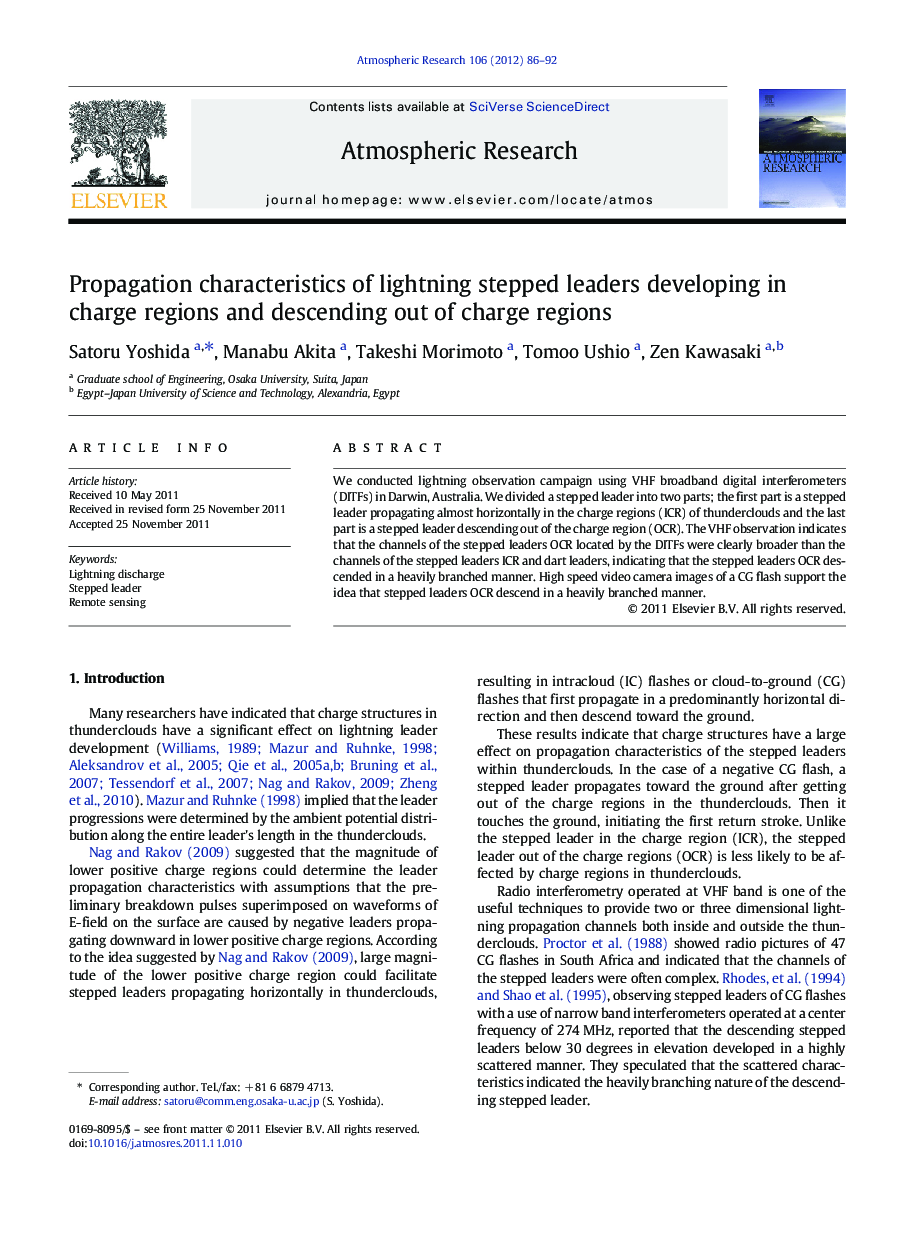| Article ID | Journal | Published Year | Pages | File Type |
|---|---|---|---|---|
| 4450302 | Atmospheric Research | 2012 | 7 Pages |
We conducted lightning observation campaign using VHF broadband digital interferometers (DITFs) in Darwin, Australia. We divided a stepped leader into two parts; the first part is a stepped leader propagating almost horizontally in the charge regions (ICR) of thunderclouds and the last part is a stepped leader descending out of the charge region (OCR). The VHF observation indicates that the channels of the stepped leaders OCR located by the DITFs were clearly broader than the channels of the stepped leaders ICR and dart leaders, indicating that the stepped leaders OCR descended in a heavily branched manner. High speed video camera images of a CG flash support the idea that stepped leaders OCR descend in a heavily branched manner.
► We examine VHF and high speed video camera images of cloud-to-ground flashes. ► The stepped leaders within thunderclouds developing smoothly without many branches. ► The stepped leaders out of thunderclouds propagated in a heavily branched manner. ► Whether positive charge is located near the leader tips might cause the difference of the propagation.
